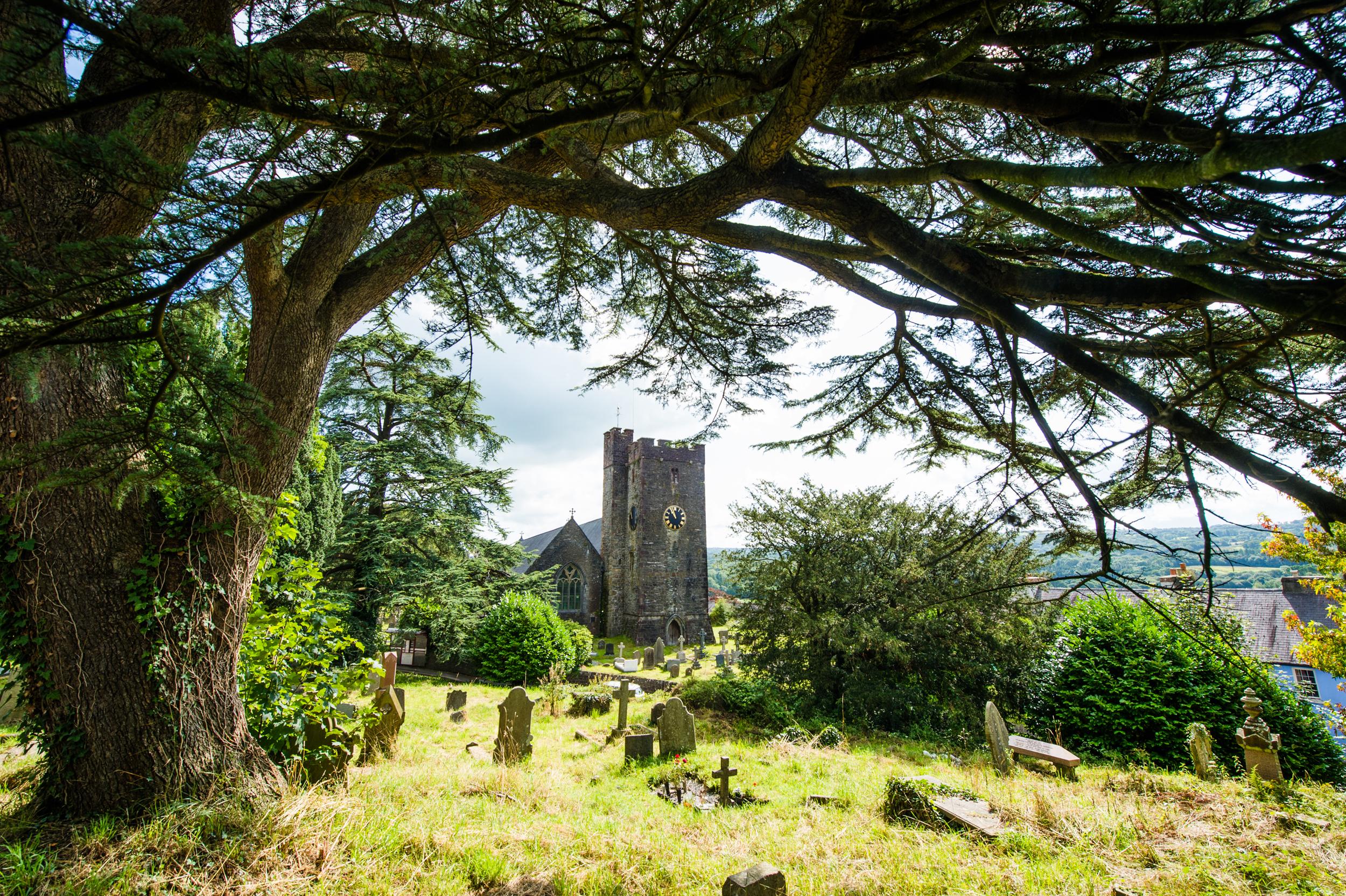Llandyfeisant Old Church
Dinefwr Estate, Carmarthenshire
Picturesquely sited in a sleepy hollow in the bountiful Tywi Valley, Llandyfeisant church is a true eyecatcher in the landscape.

Stands on a site where there has been Christian worship for nearly fifteen centuries, dating back to the mission of St Teilo in the 6th century.
Llandeilo, Carmarthenshire
A visitor to Llandeilo cannot help noticing the church, which, with its enormous churchyard, is the town's most conspicuous feature. The church building which you see today was completed in 1850; the tower is late medieval. But the churchyard and the site on which the church stands have a much longer history.
Llandeilo's history as a known Christian centre dates from the sixth century. It was in the course of that century, probably towards its close, that one of the major Christian figures of Welsh history, St Teilo, chose to make it his base.
We know very little for certain about Teilo. The churches dedicated to him are spread around South Wales, and occur also in Brittany. This distribution of his cult makes it seem likely that he travelled over this area. Two Lives of St Teilo were written in the twelfth century, and purport to give a lot of detail about the saint, but are an inextricable mixture of local legends (with a probable core of historical fact) and pure invention.
While there is almost nothing which we can know for certain about Teilo, probable facts about him are these: he travelled through South Wales and in Brittany; he made Llandeilo his centre (its site on or near a Roman road gave it good communications to east and west); he founded a community in Llandeilo; he was buried at Llandeilo. Llandaff later claimed to have his body, but as late as the thirteenth century, visitors to Llandeilo, including King Edward I, were shown Teilo's tomb in the church here.
One of the most celebrated legends about him tells how, on his death at Llandeilo, three churches claimed his body: Penally (his birthplace), Llandeilo Fawr (his chief church), and Llandaff. The clergy of the three churches prayed, then left the body in the church. In the morning, the body was found to have been miraculously triplicated, so that each church could have an authentic body to bury!
The church which Teilo left behind soon came to be called Llandeilo Fawr , 'The Great Llan of St Teilo', and the centre of a religious community.
The Llandeilo Gospel book, a beautifully illuminated Biblical manuscript, is a masterpiece of 8th century book production, and a great spiritual, artistic and cultural treasure. For perhaps 200 years, from the early 9th century, the Gospel book was in the possession of the religious community founded by St Teilo in Llandeilo Fawr. It contains in its margins and blank spaces memoranda of the community’s possessions and transactions, and these include the earliest surviving examples of written Welsh.
The origins of the book are shrouded in mystery, but it is closely related to the Lindisfarne Gospels, and the product of a monastic scriptorium. Before the end of the eleventh century, it was removed from Llandeilo in obscure circumstances. Except for a period during the civil war, it has been kept in Lichfield Cathedral, where it is known as the St Chad Gospels.
By means of sophisticated digital technology, the Llandeilo Gospel Book can be seen again in Llandeilo, where it spent such a significant part of its early history.
Dinefwr Estate, Carmarthenshire
Picturesquely sited in a sleepy hollow in the bountiful Tywi Valley, Llandyfeisant church is a true eyecatcher in the landscape.
Llandybie, Carmarthenshire
The circular shape of the original churchyard boundary here indicates the site was used for Christian worship before the present church was built.
Gwynfe, Carmarthenshire
The historic parish of Gwynfe itself has remained an agricultural area accessed only by narrow country roads.